In the soil surrounding our plants lives a vast community of microorganisms, some of which can be pathogens that negatively affect crop development. However, not everything in the underground world is harmful; there are beneficial fungi that play a fundamental role in the protection and growth of plants, especially those found in the rhizosphere.
In this article, you will discover what beneficial soil fungi are, how they help your crops, and which are the most important for naturally improving soil health.

What are beneficial soil fungi?
Beneficial fungi are organisms that interact positively with plant roots, helping them absorb nutrients, protect themselves against pathogens, and improve their resistance to environmental stress. Most of these fungi form symbiotic associations in the rhizosphere, providing essential benefits for sustainable agricultural development.
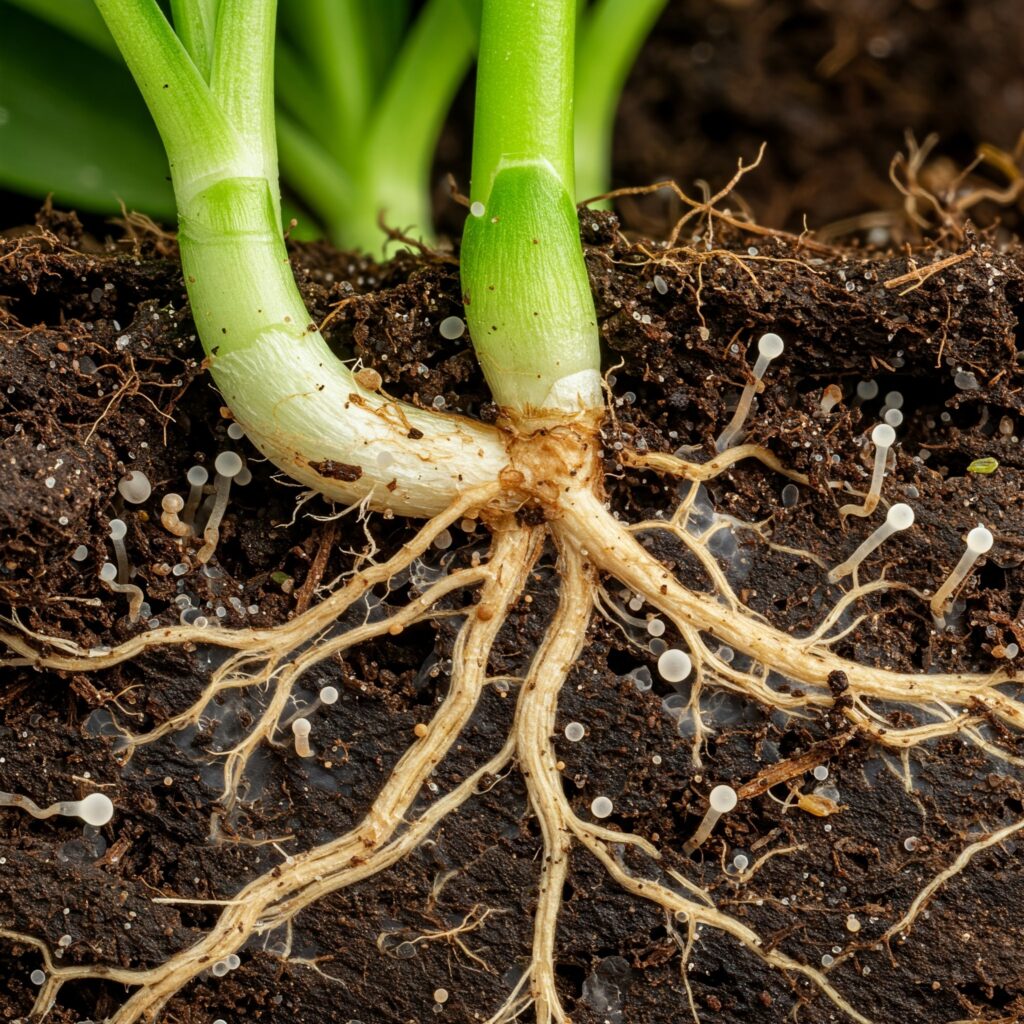
Importance of beneficial fungi in agriculture
Modern agriculture faces major challenges related to the loss of soil fertility, the intensive use of agrochemicals, and the proliferation of fungal diseases. Beneficial fungi represent an ecological and effective alternative to mitigate these problems. Their ability to improve soil structure, fix nutrients, and promote healthy plant growth is crucial for achieving sustainable agricultural systems.
In addition, many studies have shown that the use of beneficial fungi reduces the dependence on chemical fertilizers and fungicides, which not only lowers production costs but also minimizes environmental impact.
Classification of beneficial fungi
Below, we present a classification of the main beneficial soil fungi according to their function:
Arbuscular Mycorrhizal Fungi (AMF)
AMF are essential for improving nutrient uptake by plants. These fungi associate directly with the roots, forming mycorrhizae, which increases the absorption surface and facilitates the uptake of minerals such as phosphorus, zinc, and copper.
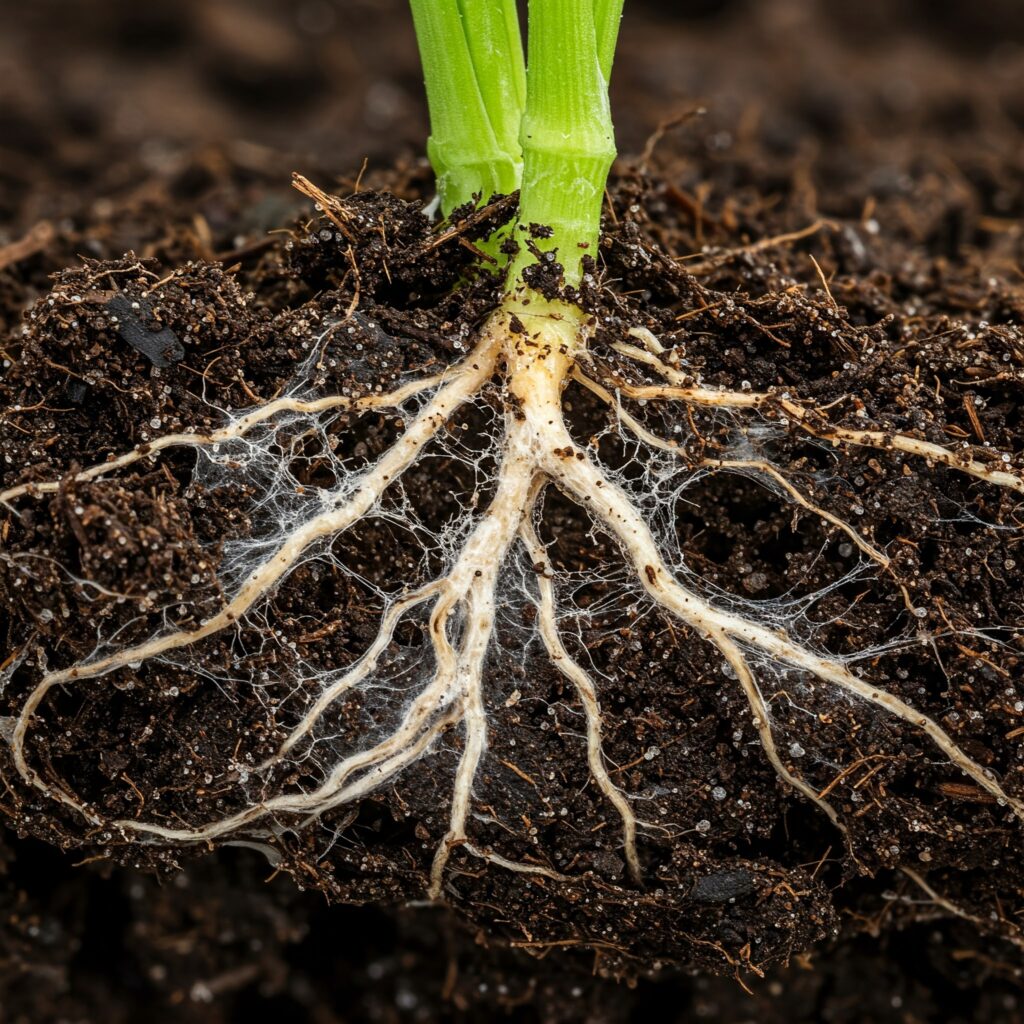
- Glomus spp.: Improves nutrient absorption (especially phosphorus), forming extensive hyphal networks that explore large volumes of soil.
- Rhizophagus intraradices: Promotes root growth and resistance to water stress, contributing to water retention in dry soils.
- Funneliformis mosseae: Increases tolerance to heavy metals, protecting the plant in contaminated soils.
- Claroideoglomus etunicatum: Promotes phosphorus acquisition in poor soils, especially in perennial crops.
Antagonistic Fungi (Biocontrol)
These fungi act as biocontrol agents, inhibiting the development of pathogenic fungi by competing for space and nutrients, as well as by producing antimicrobial compounds.
- Trichoderma harzianum: Controls pathogenic fungi such as Fusarium and Pythium by producing lytic enzymes that degrade the cell wall of pathogens.
- Trichoderma viride: Improves soil structure thanks to the production of exopolysaccharides that favor the aggregation of soil particles.
- Trichoderma asperellum: Increases the systemic resistance of plants to foliar and root diseases.
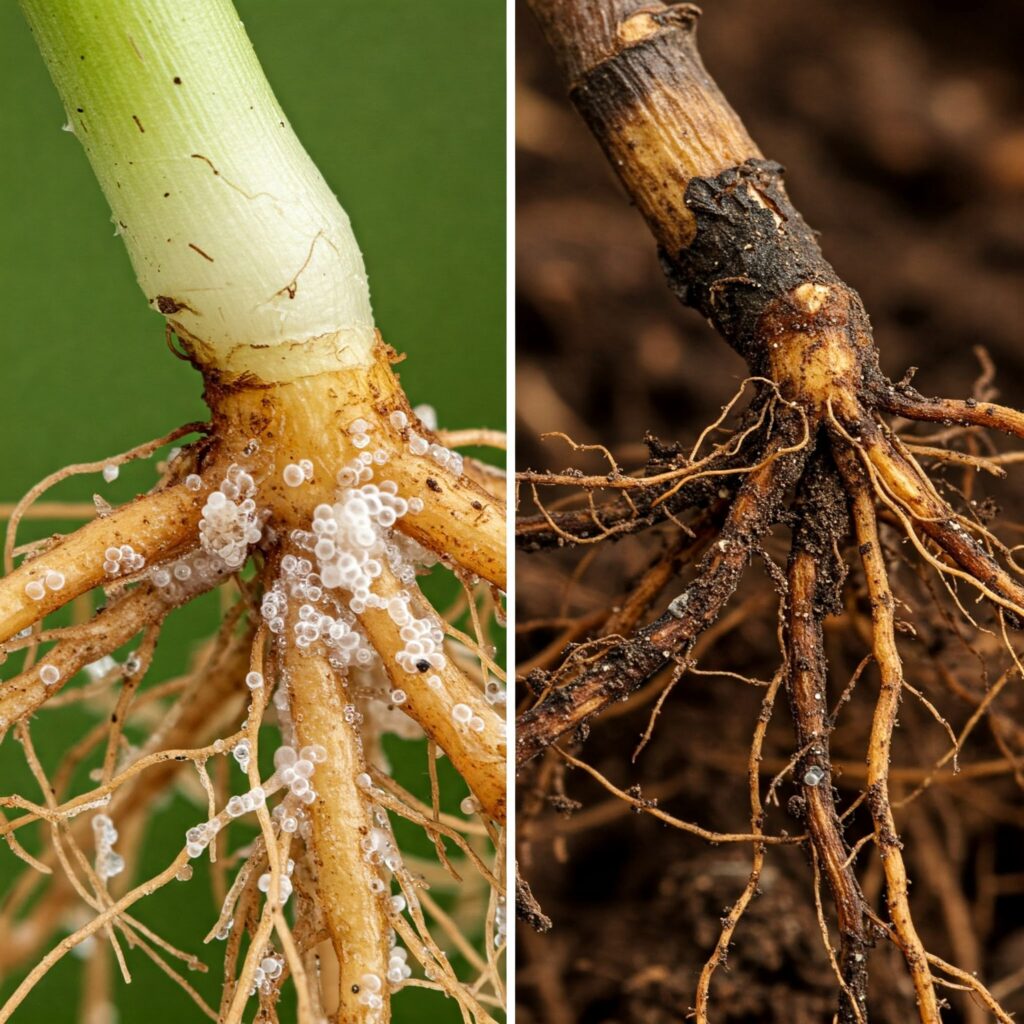
Endophytic Fungi
Endophytic fungi colonize the interior of the roots without causing harm to the plant. In many cases, these fungi contribute to resistance to abiotic stress and defense against pathogens.
- Piriformospora indica: Increases tolerance to abiotic stress such as drought and salinity, improving plant vigor.
- Serendipita vermifera: Promotes the growth of crops such as corn and wheat, especially in conditions of low nitrogen availability.
Phosphate-Solubilizing Fungi
These fungi release organic acids that dissolve insoluble phosphorus, making it accessible to plants.
- Penicillium spp.: Improves the availability of phosphorus in acidic and compacted soils.
- Aspergillus niger: Increases the solubilization of phosphates in alkaline soils through the production of citric and oxalic acids.
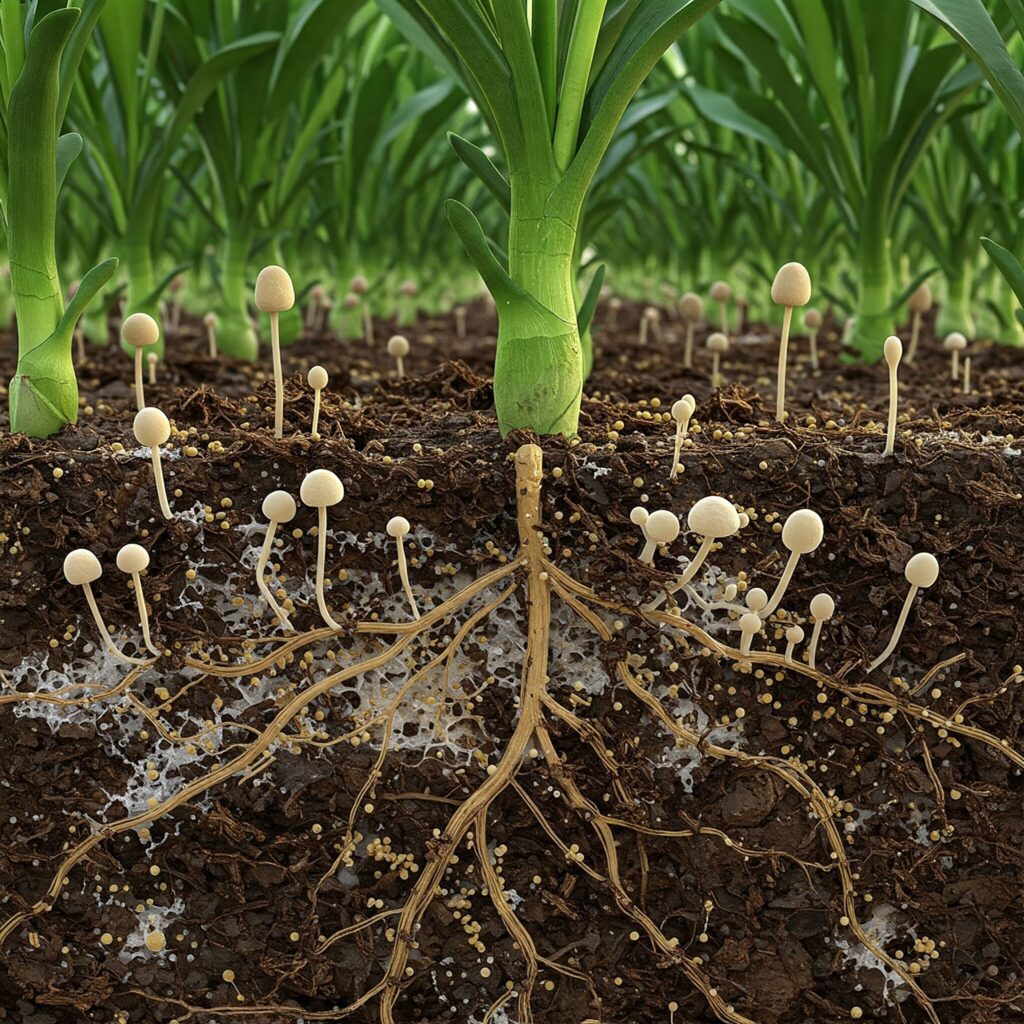
Plant Growth Promoting Fungi (PGPR)
In addition to their action against pathogens, some fungi directly promote plant growth by producing plant hormones such as auxins and gibberellins.
- Beauveria bassiana: Biological control of pests such as worms and beetles, also promoting root development.
- Metarhizium anisopliae: Control of pest insects and strengthening of the root system through superficial colonization of roots.
Implementation in agricultural systems
The incorporation of beneficial fungi into agricultural practices can be done through the application of bioproducts containing viable spores. It is essential to respect the recommended doses and consider compatibility with other agricultural inputs.
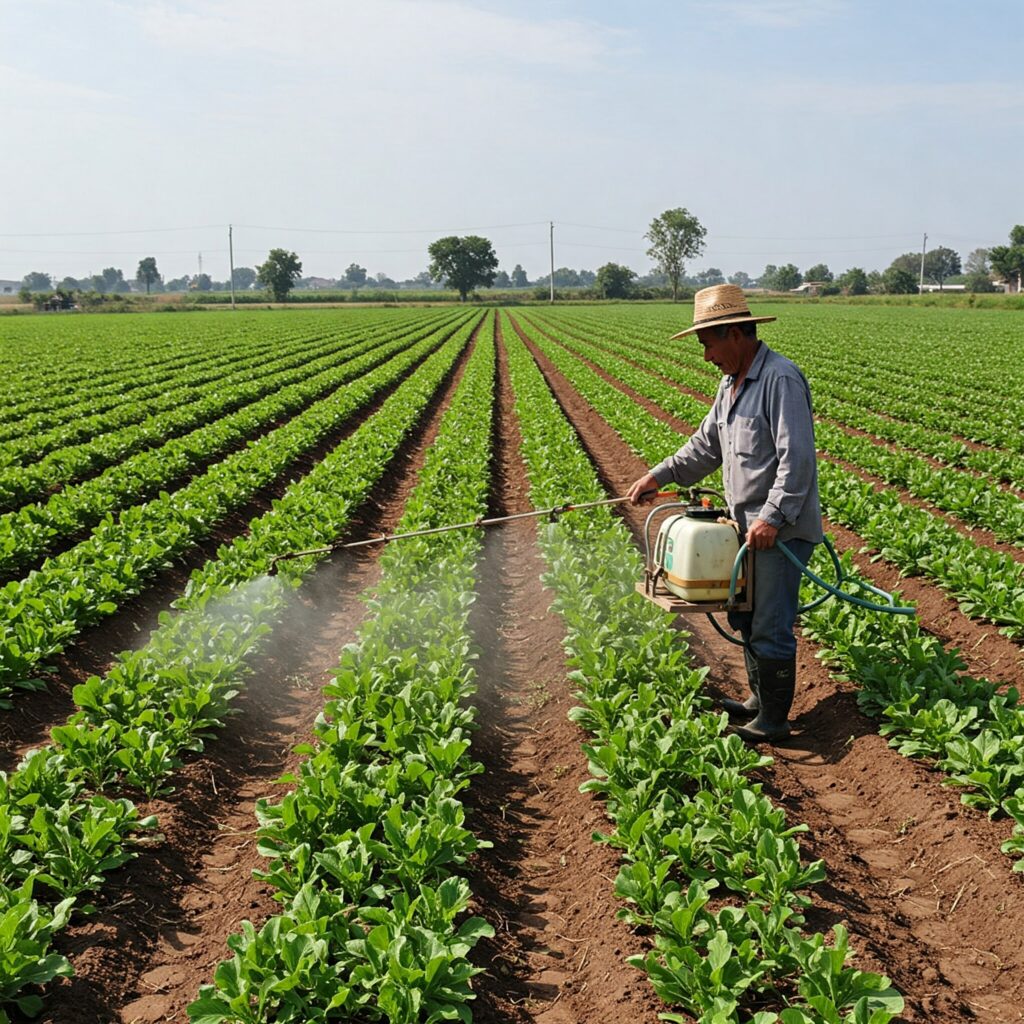
Conclusion
Beneficial soil fungi are indispensable allies for modern agriculture. Their ability to promote plant growth and protect against diseases allows for the reduction of agrochemical use and the improvement of the sustainability of production systems. Betting on management strategies that integrate these microorganisms contributes to soil health and crop resilience.
References
- Smith, S. E., & Read, D. J. (2008). Mycorrhizal Symbiosis. Academic Press.
- Harman, G. E., & Kubicek, C. P. (2002). Trichoderma and Gliocladium. CRC Press.
- Barea, J. M., Pozo, M. J., Azcón, R., & Azcón-Aguilar, C. (2005). Microbial co-operation in the rhizosphere. Journal of Experimental Botany, 56(417), 1761-1778.
 AgronoBlog – Agriculture Blog
AgronoBlog – Agriculture Blog 


